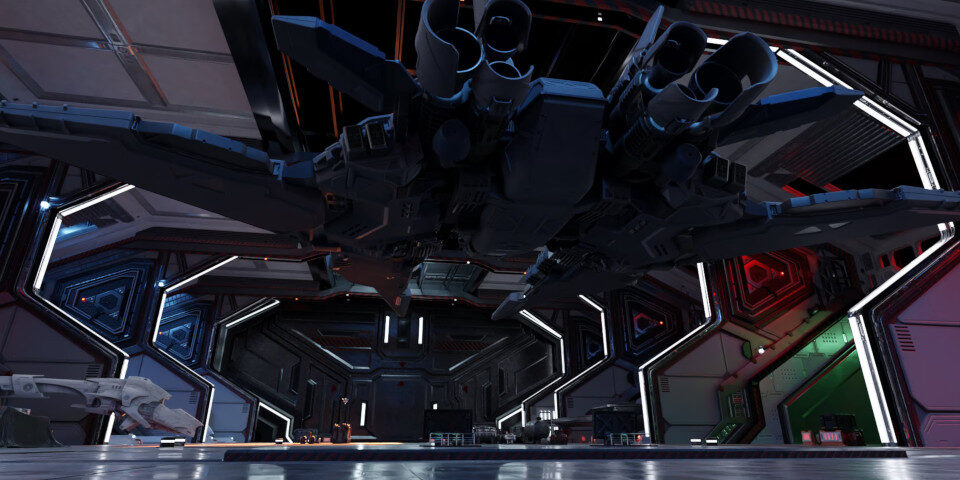AMD releases Radeon ProRender 3.6 for Blender

AMD’s hangar scene rendered using HIP in Radeon ProRender. The Blender, Maya and Houdini editions of the free GPU renderer have just switched from OpenCL to HIP for final-quality rendering.
AMD has released Radeon ProRender 3.6 for Blender, the latest version of its free GPU renderer.
The update switches the software from OpenCL to HIP for final-quality GPU rendering, and improves interactive rendering, adding support for displacement and better real-time GI.
The update was released alongside Radeon ProRender 3.4 for Maya and Radeon ProRender 2.4 for Houdini and USD, the latest versions of the Maya and Houdini editions of the renderer.
All three plugins: final-quality GPU rendering using HIP, not OpenCL
All three updates implement some of the key changes from Radeon ProRender 3.1, the latest version of the Radeon ProRender SDK, which was released earlier this year.
One of those is to switch the API used for final-quality rendering from OpenCL to HIP, AMD’s own open-source technology, also now used in Blender’s own Cycles renderer and Redshift.
HIP is now used as the backend for Radeon ProRender’s RPR – Final render mode, although the legacy OpenCL backend is still available for older GPUs.
Although the change may result in a “slight performance boost on some cards”, the main reason is the decline of support for OpenCL within CG software development.
All three plugins: better intective rendering
In addition, interactive rendering mode RPR – Interactive – which uses Vulkan rather than HIP or OpenCL – has been updated to brings its output closer to RPR – Final.
Interactive rendering now uses the Nvidia-developed global illumination algorithm ReSTIR for direct lighting, and AMD’s own FSR 2 technology for render upscaling.
RPR – Interactive is also now better supported on older GPUs without dedicated ray tracing cores, and cards with less than 8GB of graphics memory.
Other key changes include support for displacement, and better support for MaterialX: RPR-Interactive supports all of the materials in AMD’s free online MaterialX material library.
In its blog post, AMD claims that RPR – Interactive is “nearly as interactive as Eevee”, Blender’s real-time render engine, and “close to the lighting quality of Cycles”.
You can judge the results for yourself in the side-by-side comparison video embedded above.
Radeon ProRender for Blender 3.6 only: better support for Geometry Nodes
Changes unique to the Blender plugin include support for the new Mix node introduced in Blender 3.4, and better support for the Curves Info and Math nodes.
In addition, the UI of the toon shader added in Radeon ProRender for Blender 3.2 has been updated to support single-colour, three-colour and five-colour modes.
Availability and system requirements
Radeon ProRender 3.6 for Blender is compatible with Blender 2.93+ on Windows, Linux and macOS.
Radeon ProRender 3.5 for Maya is compatible with Maya 2020+ on Windows and macOS.
Radeon ProRender 2.4 for Houdini is compatible with Houdini 19.5 on Windows, Linux and macOS.
Source code for all three plugins is available under Apache Licence 2.0.
Read a full list of new features in Radeon ProRender 3.6 for Blender in the release notes
Read a full list of new features in Radeon ProRender 3.5 for Maya in the release notes
Read a full list of new features in Radeon ProRender 2.4 for Houdini and USD in the release notes
